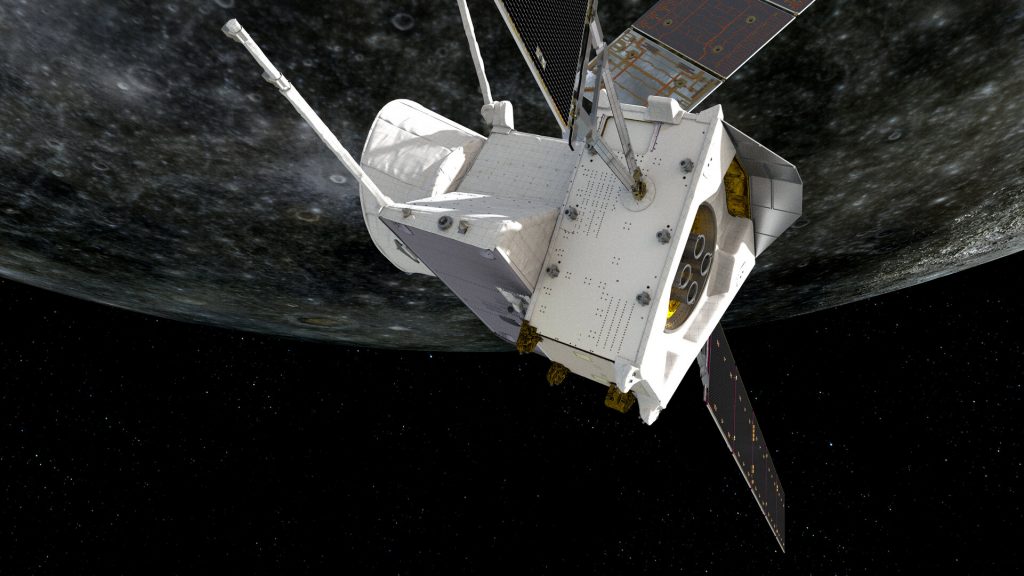Paris: BepiColombo successfully completed its first of its six encounters with Mercury, from an altitude of just 200 km.
BepiColombo, a joint mission of European Space Agency’s (ESA) and Japan Aerospace Exploration Agency (JAXA), is on its way to the mysterious innermost planet of the solar system, Mercury. The spacecraft aims to enter the planet’s orbit in 2025.
It made an encounter with Mercury at 23.34 p.m. Friday (5.04 a.m. Saturday India time). It swooped by the planet at an altitude of about 200 km, capturing imagery and science data that will give scientists a tantalising first taste of what’s to come in the main mission.
“Our #MercuryFlyby went well!” the mission team posted on Twitter Saturday.
It is difficult to take high-resolution imagery with the main science camera during the flybys because it is shielded by the transfer module while the spacecraft is in cruise configuration.
However, the Mercury Transfer Module’s Monitoring Camera 2 took an image, when the spacecraft was about 2,418 km from Mercury, the ESA said in a statement.
“The image shows a region part of Mercury as northern hemisphere including Sihtu Planitia that has been flooded by lavas. A round area smoother and brighter than its surroundings characterises the plains around the Calvino crater, which are called the Rudaki Plains,” it added.
In the image, the 166 km-wide Lermontov crater is also seen, which looks bright because it contains features unique to Mercury called ‘hollows’ where volatile elements are escaping to space. It also contains a vent where volcanic explosions have occurred.
BepiColombo will study these types of features once in orbit around the planet, the ESA said.
The camera provided a black-and-white snapshots in 1024 x 1024 pixel resolution. Some images “are somewhat overexposed”, acemore images with different exposure settings” will be shared later, the mission team said.
Mercury has a heavily cratered surface much like the appearance of Earth’s Moon, plotting its 4.6 billion year history. Mapping the surface of Mercury and analysing its composition will help scientists understand more about its formation and evolution.
The BepiColombo mission comprises two science orbiters which will be delivered into complementary orbits around the planet by the Mercury Transfer Module in 2025.
The ESA-led Mercury Planetary Orbiter and the JAXA-led Mercury Magnetospheric Orbiter, Mio, will study all aspects of this mysterious inner planet from its core to surface processes, magnetic field and exosphere, to better understand the origin and evolution of a planet close to its parent star.
BepiColombo will make use of nine planetary flybys in total: one at Earth, two at Venus, and six at Mercury, together with the spacecraft’s solar electric propulsion system, to help steer into Mercury orbit.
In August, BepiColombo zipped past Venus, taking black-and-white snapshots in 1024 x 1024 pixel resolution.
